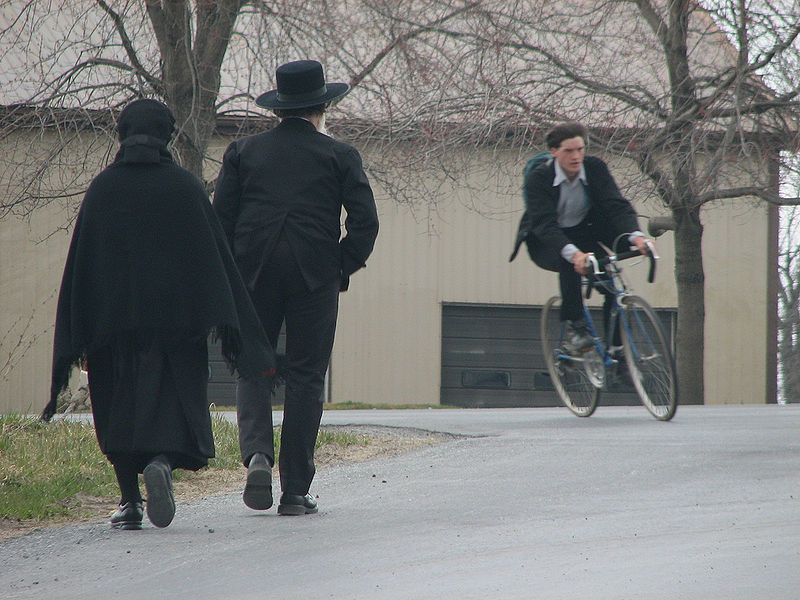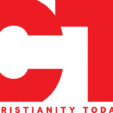米国の教会史や社会学、統計学の専門家グループが今、地域・教派・宗教団体ごとの組織宗教統計調査を行っている。それが「2020年米国宗教統計」だ。
[toggle]Church historians, sociologists, and statisticians are going county by county, denomination by denomination, group of believers by group of believers, to compile the most complete record of organized religion in the country: the 2020 US Religion Census. [/toggle]
米国宗教団体統計学協会(ASARB)のホームページ
米国政府が10年ごとに実施している公式調査では、所属宗教についての調査は行われていない。米国の宗教に関するほとんどのデータはアンケート調査によるものだが、そこには限界がある。そのため、米国宗教団体統計学協会(ASARB)は10年ごとに米国の宗教団体についての調査を行い、その全体像についての見解を示している。
[toggle]The official decennial census conducted by the United States government does not measure religious affiliation. Most data about religion in America comes from polling, but polling has its limits. So every 10 years, the Association of Statisticians of American Religious Bodies (ASARB) counts and maps religious congregations in the US. [/toggle]これは大規模な取り組みだ。同協会の2010年調査では、236宗教団体、34万4894教会、1億5068万6156人の信徒が数えられ、発表された調査結果報告書は、31のカラーマップを含む726ページに及んだ。
[toggle]The project is a massive undertaking. In 2010, the organization counted 236 religious groups, with 344,894 congregations and 150,686,156 regular participants, releasing its results in a 726-page book with 31 color maps. [/toggle]そして2020年の調査が再び始まった。バプテストでは、南部バプテスト連盟、米国バプテスト同盟のほか、ナショナル・バプテスト、プログレッシブ・バプテスト、単立バプテスト、ファンダメンタル・バプテスト、純福音バプテスト、福音バプテスト宣教団とオリジナル福音バプテスト宣教団。また、グレイス・ゴスペル・フェローシップとグレイス・ブレザレン・フェローシップも調査対象だ。ルーテル系は12教団あり、アーミッシュ系は30教団ある。統計には、建物を持たない教会、特定の場所に集わない教会、教派のない教会、また複数の教団に属する教会も含まれる。
[toggle]In 2020, they’re counting again: Southern Baptists and American Baptists, plus National, Progressive, Independent, Fundamental, Full Gospel, Free Will, and Original Free Will Baptists. They’re counting Grace Gospel Fellowships and Fellowships of Grace Brethren. Twelve types of Lutherans. Thirty affiliations of Amish. They’re counting churches without buildings and churches that meet in multiple locations, congregations with no denomination and congregations that belong to more than one. [/toggle]調査担当者が悩まされるのは、数字を追う過程で明らかになる組織宗教の複雑性だ。必死に明確な統計を求めても、各派は衰退と変化、移行、そして再編成を繰り返しており、教会の全体像はまったく捉えどころがない。
[toggle]In the process of coming up with the numbers, the census takers wrestle with the complexity of organized religion. They just want clean stats, but these data obsessives end up mapping denominational decline and transformation, migration, reorganization, and the seemingly endless shifts in the shape of church. [/toggle]1998~2001年の間、米国宗教団体統計学協会の会長を務め、米国キリスト合同教会(UCC)の引退牧師であるリチャード・H・テイラー氏は語る。「今後、カードをシャッフルするように米国の様相は変わるかもしれない」
[toggle] “There really is a feeling that maybe denominations have seen their day,” said Richard H. Taylor, a retired United Church of Christ (UCC) minister who was president of ASARB from 1998 to 2001. “There may be some reshuffling of the cards in America.” [/toggle]二つの大きなトレンドは、「教派に属さない教会の台頭」、そして「教団ブランドの弱体化」だ。その影響で米国宗教団体統計学協会の調査は困難を極めている。米国にあるすべての教派に属さない教会リストを作成するのは、年を追うごとに困難さを増している。
[toggle]Two of the biggest trends—the rise of nondenominational Christianity and the weakening of denominational brands—have made things particularly difficult for ASARB. Just compiling a list of all the nondenominational churches in the United States is an incredibly complicated task. [/toggle]
ファストフード店「チャーチズ・チキン」
(教派に属さない教会の)調査は次のような手順で行われる。まず、企業から3つの住所録を購入する。こういった企業は、インターネット上にある企業名や住所などを取り出してマーケティング会社に販売するのだ。住所録を手に入れたら、次にそのリストからファストフード店「チャーチズ・チキン」の店舗を消す。そして、「チャーチ」という名前の人物が所有するすべての会社を消去する。
[toggle]Here’s how you do it: First, you buy three mailing lists of churches from companies that scrape the names and addresses of businesses off the internet to sell to mass marketers. Then you cross out all the Church’s Chickens. You cross out all the companies owned by brothers named Church. [/toggle]「神の教会」「ウェスレー」「福音自由」などの教派名が含まれる名前の教会もすべて消去する。新聞に載っている礼拝案内を検索し、それをリストに追加する。重複分を取り除くと、残るのはおよそ6万5000の教会名だ。あとはそれを州や郡ごと、アルファベット順に並べていく。
[toggle]You can eliminate all the churches that have a denomination in the name— Church of God, Wesleyan, Evangelical Free. You look up newspaper listings for worship services in small towns and add those names to the list. After eliminating duplicates, you have about 65,000 names. Then you go one by one, working alphabetically by state and county. [/toggle]アラバマ州オートーガ郡には、計1万514のキリスト教会がある。「キリスト教会」と名前についていれば、それが団体名なのか、それとも固有名詞なのか調べるために、それぞれの教会のホームページをチェックしなければならない。「ブーンズ・チャペル」や「フレッシュ・レイン・チャーチ」という名前の教会もあったが、それらは南部バプテスト連盟に加盟していることが分かったため、今回の教派に属さない教会リストからは外された。
[toggle]Autauga County, Alabama, has 10,514 Christian congregations in total. You find each website, checking whether a “Christian Church” is nondenominational or part of the loose denomination that goes by that name. Congregations with names like Boones Chapel and Fresh Rain Church turn out to be Southern Baptist, so they’re off the list too. [/toggle]その3つをクリアしても、まだ6万4997の教会が残っている。ただし、このやり方で見つけきれなかった教会がなければの話だが。
[toggle]There are still 64,997 names to go. Unless you missed some. [/toggle]「実際にはもっと多くの教会があると思います。これはおよそ完璧にやるには無理な作業です」と語るのは、今年の教派に属さない教会調査グループを率いるスコット・タンマ氏(ハートフォード神学校の社会学者)だ。
[toggle] “I know we undercounted,” said Scott Thumma, a sociologist at Hartford Seminary who is leading the group that counts nondenominational churches for this year’s church census. “It’s an impossible task.” [/toggle]2010年の調査でタンマ氏のチームは、約6万5000の教会リストから3万5496の単立教会を見つけた。作業には6人で1000時間以上かかったという。
[toggle]In 2010, out of a list of about 65,000, Thumma’s team found 35,496 independent congregations. It took six people more than 1,000 hours, combined. [/toggle]米国のすべての教会を数える初めての試みは、連邦政府によるものだった。1850年、米国国勢調査の調査員は聖職者・教職者の数に関する情報を収集し、教会の建物について尋ねた。1890年には、より詳細な調査が行われるようになり、米国にあった145の教派は18のグループに分けられた。
[toggle]The first effort to count all the religious congregations in the US came from the federal government. In 1850, US census takers collected information on the number of clergy and asked the ministers about their church buildings. In 1890, census takers started asking more detailed questions and counted 145 denominations in the US, which they grouped into 18 families. [/toggle]政府は、1906年から10年ごとに宗教団体の人口調査を行うことを決定した。多数の移民が流入したこともあり、教派数は186に増え、27のグループに分けられた。この調査は1940年代に議論を巻き起こした。その理由に、まずニューディール時代の「大きな政府」に対する反発が挙げられる。もう一つは、「信教の自由」と「政教分離」が守られるかどうかの懸念があったからだ。1946年に宗教人口調査が行われたが、議会は印刷するための予算を拒否し、この調査結果が世に出されることはなかった。
[toggle]The government decided to do a census of religious bodies every 10 years, starting in 1906. With the influx of immigrants into the country, they counted 186 denominations, grouped into 27 families. That count became controversial in the 1940s, partly because of backlash against the big government of the New Deal era, and partly because of concerns about religious liberty and the separation of church and state. The 1946 religion census was taken, but Congress refused to pay for printing, and it was never published. [/toggle]全米教会協議会(NCC)もまた、長年にわたって米国の教会事情に関する統計をまとめてきたが、すべての教会をカバーしようとしたことはなかった。NCCは、規模の大きなグループに対して信徒数と教会数に関するデータを提供するよう協力を求め、年鑑にまとめた。
[toggle]The National Council of Churches also compiled information on US congregations for many years but never tried to be comprehensive. It published a yearbook focused on the largest denominations, asking those groups to provide their membership and congregation data. [/toggle]こういった過去のデータはすべて不完全なものであり、信頼性が低く、宗教に関するデータを詳しく知りたいと願う人々を満足させるものではなかった。1980年、米国キリスト合同教会(UCC)のリストを見て気づいた誤りについて、テイラー氏(米国宗教団体統計学協会の元会長で米国キリスト合同教会の引退牧師)は今でも覚えている。「ある郡には、米国キリスト合同教会はないとされていましたが、私はそこにあることを知っていました。また、ある郡には米国キリスト合同教会があるとされていましたが、私が知る限り、そこにはなかったのです。あのリストには190~200の間違いがあったと思います」
[toggle]All of this data was incomplete, unreliable, and deeply dissatisfying to the people who obsess over religious data. Taylor remembers looking at a list of UCC churches in 1980 and realizing it was wrong. “You have counties with no UCC churches where I know there are churches and counties with churches where I don’t know of any,” he said. “There are maybe 190 or 200 errors on this list.” [/toggle]そこでテイラー氏は自らデータの編集を始めた。そして、米国宗教団体統計学協会で同じような考えを持つ統計学専門家を見つけ、調査を支える目的で契約した。
[toggle]So Taylor started compiling his own data. He found like-minded stat counters at ASARB and signed up to help the organization with its census. [/toggle]「それは必要なことでした。統計、地理、そして歴史についてきちんと理解することは、私たちが目にしている物事を理解するのに役立ちますから」とテイラー氏は言う。
[toggle] “I think it matters,” Taylor said. “I think understanding the statistics, the geography, and the history together helps people understand what they’re encountering.” [/toggle]米国宗教団体統計学協会は、1990年に初めて教会数の調査を行った。「米国宗教調査」は2000年以降、宗教の多様性を尊重するようになり、主要なキリスト教グループだけでなく、シーク教(インド発祥の宗教)、バハイ教(イラン発祥の宗教)、ゾロアスター教(古代ペルシア発祥の宗教)などの非キリスト教グループ、またこれまで統計に含まれてこなかった(小さな)キリスト教グループも数えるようになった。
[toggle]ASARB conducted its first congregations count in 1990. Starting in 2000, the US Religion Census began to make religious diversity a priority, trying to go beyond the major denominations to count non-Christian groups, including Sikh, Bahá’í, and Zoroastrian, as well as Christian groups that hadn’t participated before. [/toggle]
散歩をするアーミッシュの夫妻(写真:Gadjoboy)
オハイオ州立大学のジョセフ・F・ドナーマイヤー氏も、同じ1990年にアーミッシュについて統計を取るようになった。ドナーマイヤー氏は、アーミッシュ人口についての統計がひどく正確性に欠けていることを発見した。ある地域では実際の数よりも多すぎたし、他の地域では少なすぎた。教派に属さない教会と違い、こういった情報はインターネット上には存在しないため、彼はアーミッシュ系の新聞に掲載されていた案内や、年鑑、年末レポートを収集し、自らの目で数え続けた。
[toggle]Joseph F. Donnermeyer at The Ohio State University started counting the Amish that year. He found the existing estimates of the Amish population were wildly off, with overcounting in some places and undercounting in others. Unlike nondenominational churches, none of this information was online, so Donnermeyer started collecting regional directories, almanacs, and year-end reports from Amish newspapers to count for himself. [/toggle]アーミッシュの教会には建物がなく、「教会グループ」は20〜40の家族の集まりで構成され、指導者はくじによって選ばれる。アーミッシュは出生率が高く、20年ごとに2倍に増えるため、毎年10〜20の新しいコミュニティーが作られる。既存のグループが分派することも珍しくなく、特に教会の規律をめぐる分裂が多い。どのグループがどのグループと関係性を持っているかを追跡するのは非常に困難だ。
[toggle]The Amish don’t have church buildings, so a “church group” is a cluster of 20 to 40 families with a bishop chosen by lot. The Amish have high fertility rates, doubling in size every two decades. With that growth, there are 10 to 20 new Amish settlements established every year. Existing groups also frequently fracture, dividing over church discipline. It can be very hard to track which groups are affiliated with which groups. [/toggle]「アーミッシュの中で最も事情に詳しい人でさえ、すべての分派について知っているわけではないでしょう。アーミッシュについて知ろうとするのは、顕微鏡を使ってキルト作品を見るようなものですから」とドナーマイヤー氏。
[toggle] “Even the most knowledgeable Amish person would not be able to keep count of all these divisions,” Donnermeyer said. “When you look at the Amish, you look at a quilt through a microscope.” [/toggle]コンタクトを取れるようなリーダーが指定されていない教派もあり、そのことが調査を困難にしている。2010年の「米国宗教調査」では、米国聖公会から離脱した数十の教会のうち、一つの教会からしか統計を取ることができなかった。アフリカ系米国人の小さな教派から正確な数値を得ることも難しかった。
[toggle]Other denominations are hard to count because they don’t have designated leaders to talk to. In 2010, the US Religion Census could only get statistics for one of the dozen groups of Anglicans who have broken away from the Episcopal Church (USA), and researchers struggled to get accurate counts from small African American denominations. [/toggle]また、宗教団体が新しい組織構造を導入することもあり、統計学者たちは新たな課題に直面している。今年、米国宗教団体統計学協会で議論になったのは、近年増えている「二重登録(複数の教派と関係性を持つ)教会」の数え方だ。また、特定の場所で活動を行わない教会は一つの教会として数えるのか、複数の教会として数えるのかも議論された。教派に属さない教会の調査チームは、過去10年間に教派を脱退したすべての教会について情報を整理しようとしている。
[toggle]The statisticians are also facing new challenges, as religious groups develop new ways to organize themselves. This year, ASARB is discussing how to count the increasing number of congregations affiliated with more than one denomination, a practice called “dual enrollment.” The statisticians are also debating how to map multisite churches, which could count as a single congregation or multiple. And the nondenominational team is sorting through all the churches that have de-branded in the past decade. [/toggle]「教派(という分け方)で実態を把握しようとしても、つじつまを合わせるのがたいへんになってきています。アイデンティティーが曖昧(あいまい)だったり、教派にほとんど属していない教会や、教派の名前を入れない教会などもありますし、そういった困難はこれまでも常にありました。それも生半可(なまはんか)ではない困難です。しかし、そのハードルはさらに高くなってきています。『米国宗教調査』は、私たちが得うる最高のものですし、私はそれを強く支持します」とタンマ氏は言う。国勢調査は2022年5月に公表される予定だ。
[toggle] “The denominational reality is getting significantly harder to make sense of,” Thumma said, “with fuzzy identities, and quasi-nondenominational churches, and churches dropping the denominational name. . . . It was always difficult. Incredibly difficult. But it’s gotten more difficult. The US Religion Census is the best thing we have, and I’m a strong proponent of it.” The census is scheduled for publication in May 2022. [/toggle]執筆者のダニエル・シリマンは「クリスチャニティー・トゥデイ」のニュース編集者。
本記事は「クリスチャニティー・トゥデイ」(米国)より翻訳、転載しました。翻訳にあたって、多少の省略をしています。
